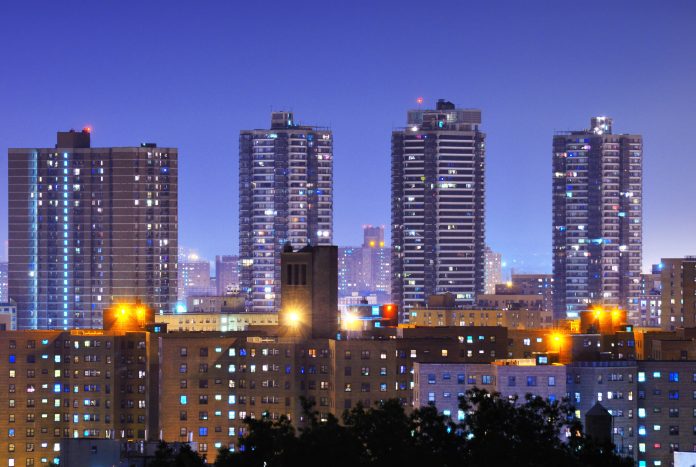Study finds non-white, low-income populations suffer increased COVID-19 death risk and proposes rent freeze policies to help people survive
The Boston University School of Public Health (BUSPH) conducted a study, published in the American Journal of Preventive Medicine, examining how the risk factors for severe or deadly COVID-19 are present in a certain section of the US population. They found that Black, Native American and lower-income people are highly likely to have one or more of those crucial factors, as defined by the Centers for Disease Control and Prevention (CDC).
Study lead author Mr. Matthew Raifman, a doctoral student in environmental health at BUSPH, commented:
“In many respects, COVID-19 is the latest chapter in the book about how structural disparities shape the burden of disease in America.”
Study co-author Dr. Julia Raifman, assistant professor of health law, policy & management at BUSPH, said:
“Decades of structural inequities in education, employment, housing, stress, and other factors have shaped disparities in the burden of chronic diseases by race, ethnicity, and income.
“Now, these structural inequities have created a context in which people who are black, American Indian, or lower income face additional risk of death if they contract COVID-19.”
Firstly: How did the research team figure this out?
They used 2018 data on over 330,000 people, from the Behavioural Risk Factor Surveillance System. Looking through this rich source of information about the US population, the authors estimated that 43% of American adults (97 million people) have one risk factor, while 18% (40 million) have two or multiple COVID risk factors.
Secondly: Race is significant to severity of COVID
The age of 65 is being used as a high-risk factor by the CDC, so the authors looked at those under that age. 33% of Black and 42% of Native American adults had at least one risk factor, versus 27% of white adults. The multiple risk factor was 11% of the Black people sampled, and 18% of the Native American people sampled. Again, this compares drastically to the 8% multiple risk factor experienced by white people.
For those 65 or over, it was found that 69% of the Native American and 61% of the black respondents had one or more risk factors beyond their age. This stands next to the figure of 54% of white respondents who embody similar risks.
Thirdly: Low-income families are highly at risk
At least 25 million people living in low-income households have at least one factor. But for those under 65, low-income respondents were nearly twice as likely to have one or more risk factors than high-income respondents, and more than twice as likely to have multiple risk factors. That means poorer individuals are twice as likely as people in a better-off financial position to catch a severe or fatal case of COVID-19.
Why is there increased risk to the non-white and poor?
Prof Chaturvedi is director of the MRC Unit for Lifelong Health and Ageing at UCL, writing for The Guardian, spoke of the link between race and an increased COVID-19 death risk:
“Genetics sounds like an easy get-out clause, but it isn’t. Ethnicity is a complex socio-cultural construct, it’s not a biology construct. There’s no gene for being Asian. There’s no gene for being black. People of ethnic group membership can change over time and with age, it’s not an immutable thing and it very poorly maps on to any biology you can think of.
“Ethnic minorities are over-represented in high-risk occupations, including health workers, in the transport sector and essential shop work. Clearly, there’s a huge amount of heterogeneity, but overall ethnic minorities are more likely to live in deprived, dense, over-crowded urban areas and are more likely to be disadvantaged.”
Both authors emphasise the interconnected situations that occur from inequities that contribute to chronic conditions. These populations are more likely to live in crowded, multi-generational homes, and work in jobs such as hospitality, cleaning and manual labour which cannot be done remotely. These things automatically increase the risk of exposure.
Mr Matthew Raifman comments on how the unequal impact of COVID should be considered in the recovery:
“People who are black, American Indian, or lower-income are both more likely to be exposed to COVID-19 and more likely to develop severe illness if they contract the virus.
“As society considers return-to-work policies and recovery efforts, it’s important to recognize that risk of exposure and the severity of COVID-19 is not uniform across America. There’s a real risk that the rising tide of recovery will not lift all boats equally–and, worse, that it might further exacerbate disparities in health for minorities and the least affluent among us.”
Dr. Julia Raifman highlights the necessity of meaningful policy intervention:
“Policies such as freezing evictions, rent, and mortgage payments for people affected by COVID-19 may help people stay in their homes, and expanding SNAP benefits may help people have enough to eat.
“As COVID-19 compounds existing health disparities, it highlights the importance of policies that support more equitable health over the long term.”











